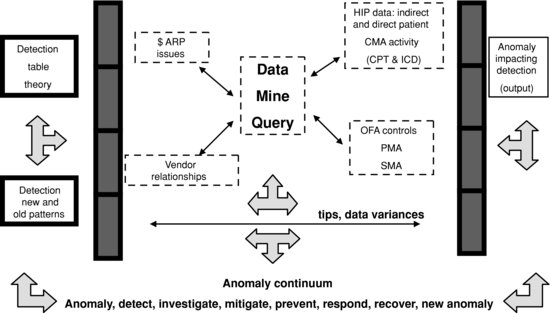Detection Model
Exhibit 20.1 begins with the concept of detection. Detection is the discovery of clues within the data. This book is all about finding the anomaly. The model reflects taking segmented market pieces and blending them into one data source for seamless analysis. Any anomalies will be noted and will feed the detection table for future analysis. This output is then evaluated for either response or follow-up investigations.
Exhibit 20.1 Detection Model

The following sample case flow is an actual case with hypothetical names.
Get Healthcare Fraud: Auditing and Detection Guide, 2nd Edition now with the O’Reilly learning platform.
O’Reilly members experience books, live events, courses curated by job role, and more from O’Reilly and nearly 200 top publishers.

